Works
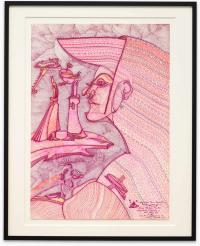
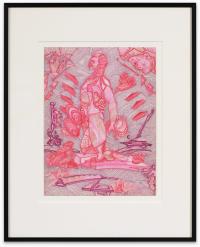
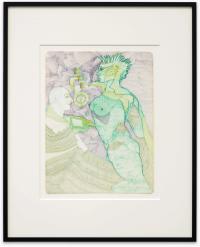
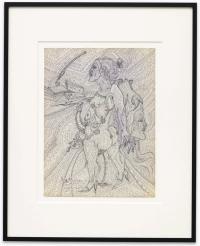
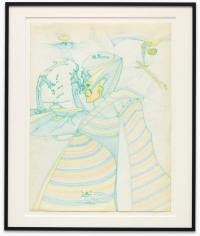
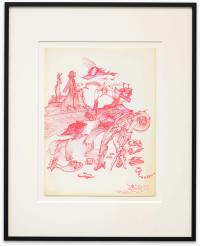
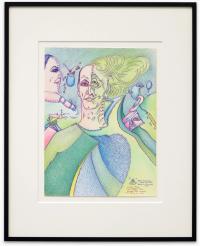
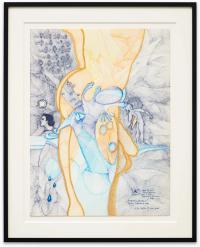
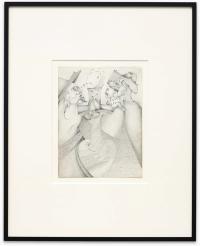
Installation Views
Press Release
Galerie Jan Kaps is pleased to present its first exhibition Scene I of work by Albert Leo Peil (1946–2019). The show marks the gallery’s beginning stewardship of the Peil estate. The first exhibition of Albert Leo Peil displays a selection of drawings, garments, and archival notebooks ranging from the late seventies to the two thousand tens. For the show’s duration, the gallery has been transformed into a darkroom, reflecting Peil’s architectural research. Almost entirely overlooked during his lifetime, Peil’s work combines issues of identity construction, queerness, and discourse on gender with sci-fi components as well as architectural elements, raising the genre of the portrait for discussion.
Most of Peil’s drawings are characterized by their obsessive attention to detail. His drawings, executed mainly in ink, are generally populated by idealised figures embedded in tectonic and pointillistic landscapes. The stylized characters appearing in them often represent mythical and celestial entities and cultural icons, strikingly in Urania Dali, 1985, where the surrealist master is conflated with Urania, the Greek muse of astronomy. The holistic approach of identity construction is illustrated on both recto and verso of his works; many drawings are accompanied by painstakingly manicured notations ranging from personal comments to excerpts of poems, representing a deep and persistent exploration of queer sexuality and identity beyond the rigid gender norms of his time.
The bodies depicted in countless drawings seem to reify certain types of masculinity (L’exhibition d’amour l’oeuf, l’homme et pain à la Maître Dr Otto Grau, 1987), whilst simultaneously challenging patriarchal society by juxtaposing and combining these elements with female sexual organs, illustrating hermaphrodites and otherwise sexually ambivalent characters defying gender binaries. With genitalia often prominently displayed, undertones of fetishism emerge in the form of portraits of the Marquis de Sade or through countless sketches of elaborate footwear, costumes, and other ornamentation. Peil developed his own unique visual techniques to study the few outlets for queer desire and aesthetics offered by a still largely closeted society, engaging in the discourse around gender construction ahead of his time.
The aesthetics of Peil’s work even seem to transcend temporal boundaries altogether when seemingly ancient figures are clothed in baroque robes but also wear sci-fiesque headgear inspired by French couturier Pierre Cardin's designs from his legendary 1960s Space Age collection. Throughout Peil’s work, the aesthetic language of garments seems to blend into the bodies they clothe. His own faux fur and velour creations, which he was known to wear, heavily perfumed, as he ran errands are testament to a gesamtkunstwerk, an exploration daring to go beyond the imagined into reality as he physically placed himself in the larger context of his work, casting himself an active participant in a lifelong quest for belonging.
Born in 1946 in Berlin, Albert Leo Peil moved to the small Franconian town of Lauf an der Pegnitz and resided there until his death in 2019. With little formal arts training, save for two semesters at the Nuremberg Academy of Fine Arts under the tutelage of abstract painter Ernst Weil, Peil instead completed an apprenticeship as a decorator and earned his living outside the sphere of the arts.
Following Scene I, Jan Kaps presents Scene II, an exhibition focusing on the artist's embossed copper works.
We would like to thank Suzanne Zander and Nicole Delmes for their support in making this exhibition possible.
































